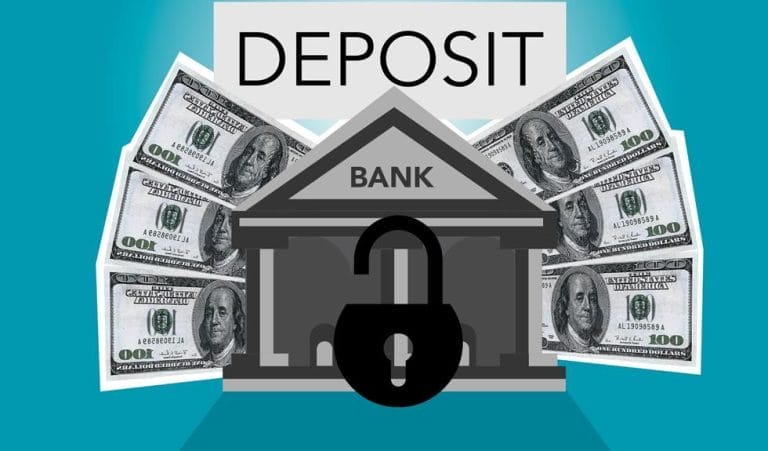Creating a small business invoice is like crafting a signature dish – it’s unique to your business and important for your financial health. You’re about to learn how to whip up a professional invoice that’s clear, concise and represents your brand perfectly.
This guide will provide you with key ingredients – from essential company information to itemized breakdowns of products or services. You’ll also find out how to present the total amount due in a way that’s easy for your customers to understand.
So, let’s roll up our sleeves and start cooking up that perfect small business invoice.
Key Takeaways
- A standout header, including your company’s information, customer’s information, invoice date, and due date, is crucial when creating a small business invoice.
- Assigning each invoice a unique identifier by numbering them helps in organizing and tracking payments.
- Including a breakdown of products and services provided, such as the name, date, rate, and quantity, helps the customer understand the bill better.
- Clearly listing itemized fees, such as handling and taxes, and prominently displaying the total amount due on the invoice ensures transparency and ease of payment.
Essential Elements in Invoices
When you’re crafting your invoice, it’s crucial to include certain key elements to ensure clarity and professionalism. Invoice formatting is pivotal, starting with a clear header and your company’s information.
Don’t forget your customer’s details and the invoice’s sent date and due date. Each invoice should have a unique number for easy tracking.
An itemized breakdown of products or services provided gives your customer a clear understanding of what they’re paying for. Make sure to list any additional fees separately and clearly state the total amount due.
Invoicing software can streamline this process, allowing for customization and automation.
Importance of Standout Header
A standout header is crucial in your invoice as it immediately grabs your customer’s attention and sets the professional tone for the entire document. It’s not just about aesthetics, the header design helps in building your brand’s identity. That’s the importance of branding in invoices. It distinguishes you from competitors and gives a sense of reliability to your customers.
| Standout Header Design | Branding in Invoices |
|---|---|
| Grabs immediate attention | Establishes brand identity |
| Sets a professional tone | Distinguishes from competitors |
| Gives clarity about the document | Builds credibility |
To create an appealing header, incorporate your logo, company name, and contact details. Keep the design clean and consistent with your brand’s color scheme. Strive for simplicity and readability. Your header should reflect your professionalism, making your business memorable to your clients.
Company Information Inclusion
In your next step, you’ll need to include your company’s information in the invoice. This is a key aspect of invoice customization. Clearly present details like your business name, address, contact number, and email. This serves dual purposes. Firstly, it provides a point of reference for customers who may have queries or need to follow up. Secondly, it fosters a professional image for your business.
It’s equally important to include the correct customer information. This includes their name, address, and contact details. Double-check this information to avoid confusion or miscommunication. Remember, accuracy in these details can make the difference between a smooth transaction and an invoice dispute. So, take the time to ensure all information is accurate and well presented.
Customer Contact Details
You’ll need to meticulously input your customer’s contact details on the invoice. These include full name, address, email, and phone number. It ensures accurate billing and aids in fostering a professional relationship.
Utilizing invoicing tools can streamline this process, filling in saved details automatically and reducing the margin for error. When entering these details, be concise and clear, avoiding any ambiguity.
Cross-verify these details to avoid any inaccuracies that could lead to complications later. Remember, it’s not just about getting the invoice paid, it’s also about maintaining clear, open communication with your customers.
Significance of Invoice Dates
Understanding your invoice’s sent date and due date is crucial to your business’s cash flow and accounting processes. The invoice date importance can’t be overstated; it determines when payment is due and impacts the accuracy of your financial records.
Additionally, when comparing invoicing software, look for options that allow automatic date tracking for better time management and productivity.
| Feature | Importance |
|---|---|
| Invoice Sent Date | This is when your customer officially gets billed. It’s critical for keeping track of income. |
| Invoice Due Date | This determines when you expect payment. It’s essential for forecasting revenue and managing cash flow. |
Role of Invoice Number
When creating an invoice for your small business, it’s essential to include a unique invoice number for each transaction. This role of invoice numbering can’t be underestimated. It serves as a unique identifier, making it easy to track, manage and reference transactions. It’s a crucial part of record-keeping, aiding in reconciling accounts and resolving any discrepancies swiftly.
Moreover, it helps in monitoring the payment status and facilitates easier communication between you and your clients. To simplify this process, consider using invoicing software. It automatically assigns unique numbers to each invoice, eliminating the risk of duplication or errors.
The benefits of using invoicing software not only include efficiency but also accuracy and improved organization. Therefore, never underestimate the power of a simple invoice number.
Tips for Professional Invoices
Often, creating professional invoices involves more than just including essential details; it’s also about presenting these details in a clear, concise, and aesthetically pleasing manner.
To ensure customer satisfaction, incorporate your brand identity into your invoice. Use your logo, color scheme, and brand voice consistently.
Provide an itemized breakdown of services or products provided, along with any additional costs. This transparency not only gives your customer a clear understanding of what they’re paying for, but also fosters trust.
Streamline payment processing by clearly stating accepted methods of payment and due dates.
Remember, an error-free invoice not only reflects your professionalism but also helps avoid confusion and delays in payment.
Your attention to detail in invoicing can significantly contribute to positive customer experience.
Accurate Information Verification
Why should you meticulously verify all information on your invoice?
It’s all about maintaining professional standards and avoiding confusion. Accuracy verification isn’t just about checking numbers; it also involves scrutinizing your invoice formatting.
An error in the customer’s name, address, or other details could cause delays in payment or even result in the invoice being sent back. Similarly, incorrect item descriptions or quantities can create misunderstandings, leading to disputes.
Always double-check your calculations to ensure the total amount due is correct. Remember, it’s not just about getting paid; it’s also about building a reputation for reliability and professionalism.
Payment Due Date Clarification
In setting your payment terms, it’s essential that you clearly specify the due date on your invoice to avoid any ambiguity regarding when payment is expected. This clarity ensures prompt payments and maintains a smooth cash flow for your business. You can opt for standard net 30 or net 60 terms, or customize them based on your operations.
To further reinforce this, mention any late fees that apply if the payment isn’t received by the due date. This serves as a deterrent for delayed payments and compensates you for any inconvenience.
Breakdown of Products and Services
After outlining your payment terms and due date, it’s crucial for you to provide a detailed breakdown of the products and services you’re billing for. This section should include item description elaboration, quantity, and price per unit. Clearly list each product or service separately, describing what you’ve delivered in detail. Be sure to add any taxes, discounts, or shipping fees applicable.
This transparency not only builds trust but also helps clients understand exactly what they’re paying for. Remember to clearly state the total amount due, including all charges. Lastly, don’t forget to mention available payment methods.
Importance of Item Descriptions
While you’re creating a detailed breakdown of the products and services for your invoice, it’s crucial to understand the importance of item descriptions. These descriptions provide clarity, eliminate ambiguity, and help your clients understand what they’re being billed for. The item description format should be clear and concise, detailing the product’s name, quantity, rate, and any additional relevant details.
Invoice customization options, such as adding images or using different fonts, can create a more engaging invoice, but don’t let that distract from the item descriptions. Remember, the main goal is to communicate clearly what your client is paying for.
An accurate, detailed item description promotes transparency, builds trust, and can even serve as a reference for future transactions.
Itemized Fees and Total Due
Your invoice’s clarity and transparency hinges on properly itemizing your fees and clearly stating the total amount due. For instance, separate charges for products, services, taxes, and shipping should be listed individually. Here’s a table to illustrate itemized fees examples:
| Item Description | Quantity | Price |
|---|---|---|
| Product 1 | 10 | $100 |
| Service 1 | 5 | $50 |
| Tax | N/A | $30 |
| Shipping | N/A | $20 |
Simply sum all the charges to calculate the total amount due. Your clients appreciate knowing exactly what they’re paying for. It eliminates confusion and builds trust, making your clients more likely to pay promptly and continue doing business with you. Remember, a detailed, transparent invoice is more than just a bill – it’s a communication tool.
Designing Brand-Reflective Invoices
Moving on to designing your invoices, it’s essential to ensure they reflect your brand effectively. This isn’t just about aesthetics; it’s a key part of customer communication and branding consistency.
Start by incorporating your logo and applying your brand’s color scheme. These visual cues instantly connect the invoice to your business.
Then, ensure the invoice’s language matches your brand’s voice. Is it formal or casual? Professional or friendly? Your invoice should feel like a seamless extension of your brand.
This consistency not only reinforces your brand identity but also fosters trust and recognition among your customers.
Lastly, maintain this branding consistency across all your customer-facing communications. A well-branded invoice leaves a lasting impression and promotes your business’s professionalism.
Utilizing Invoicing Tools and Software
To make your invoicing process more efficient, you can utilize various invoicing tools and software designed for small businesses. These automated invoicing solutions not only help streamline your work but also reduce errors. Moreover, they offer the benefits of cloud-based invoicing, like easy access from anywhere and secure data backup.
Here’s a quick comparison of some popular invoice tools:
| Tool | Features |
|---|---|
| QuickBooks | Automated invoicing, customization, batch invoicing, invoice tracking |
| FreshBooks | Impressive invoicing with automation, free templates |
| Zoho Books | Online invoicing, payment collection |
Choose one that best fits your needs and budget. By leveraging these tools, you’ll find invoicing to be less of a chore and more of a strategic business process.
Conclusion
Invoicing might seem a challenge, but remember, 64% of small businesses report getting paid on time after sending professional invoices. That’s the motivation to perfect your invoicing process!
With a standout header, clear item descriptions, and a total that’s easy to understand, your invoices won’t just reflect your brand, they’ll also increase efficiency.
So, embrace the tools at your disposal and make your invoice a powerful asset in your business toolkit.
You’ve got this!







